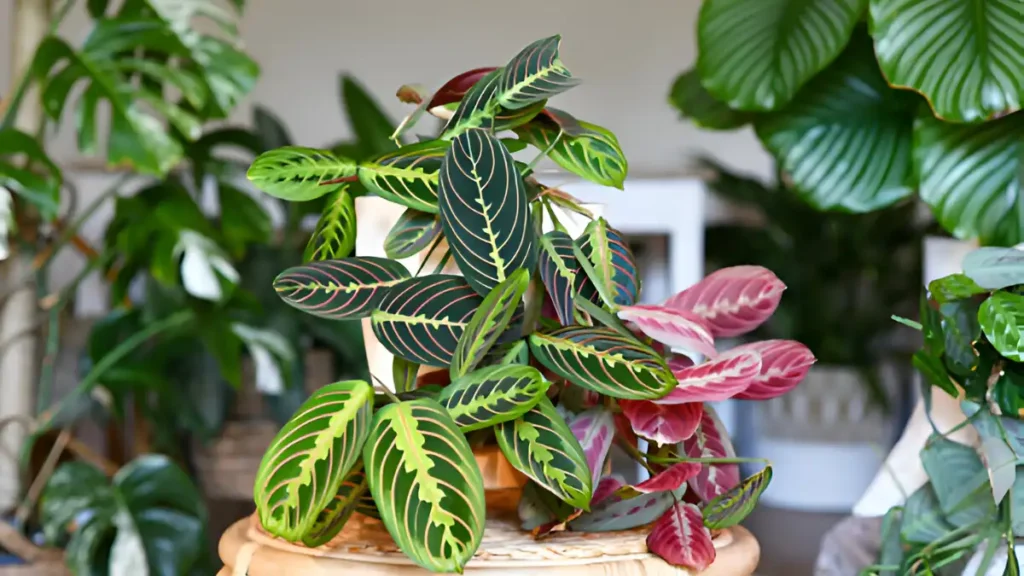Prayer plants, scientifically known as Maranta leuconeura, are common tropical plants valued for their beautiful, ornamental leaves. These plants originated in the thick, humid jungles of Central and South America, especially Brazil, and are highly recognized for their unusual behavior and beautiful leaf patterns.
Extensive guide to prayer plants care and growing:
Light:
Bright, indirect light is ideal for prayer plant growth. Their leaves can become damaged by direct sunshine and lose their vivid colors and patterns from insufficient light. Position near a north or east-facing window.Deficient light levels and direct sunshine.
Soil:
The best soil for prayer plants is peaty, well-draining soil that holds moisture without becoming drenched. Utilize potting soil, perlite, and peat moss in combination.
Watering:
When the soil seems dry in the top inch, water it. This usually entails watering once a week or so. To avoid tap water’s harmful fluoride and chlorine, which can affect plants, use room-temperature, distilled, or rainfall instead.
Temperature and Humidity:
Keep the environment around your prayer plant warm and damp. Normal home temperatures, which range from 60 to 80 degrees Fahrenheit, are normally acceptable; however, you might need to feed your plant with more humidity. Your plant can benefit from an increase in humidity if you put a small humidifier close by or place it on a tray with water and little stones on it.
Fertilizing:
During their growing season, prayer plants benefit from regular feeding. every four to six weeks throughout the summer and spring. Apply a half-strength solution of a water-soluble, balanced fertilizer.
Pruning of Prayer plant:
Trim away any leggy or dead growth. It is possible to multiply prayer plants by division or Stem cuttings should be soaked in water until roots format, then planted in soil.
Typical Problems and their solutions:
Usually an indication of overwatering. Adjust your watering schedule and make sure everything drains properly. Usually brought on by using tap water or low humidity. Turn up the humidity and use rainwater or distilled water instead. Aphids, mealybugs, and spider mites can all be drawn to prayer plants. Check your plant frequently, and if needed, treat it with insecticidal soap.
Tips for Seasonal Care:
Water the plant more frequently, but make sure it stays out of direct sunlight. Make sure the plant is not near any chilly drafts and water it less frequently. It’s very important to maintain humidity during the winter.
Conclusion:
In conclusion, it can be said that by following these care guidelines, your prayer plant will flourish, showcasing its beautiful foliage and fascinating nightly movements. Whether you are a seasoned plant enthusiast or a beginner, prayer plants are a rewarding addition to any indoor garden.
Certainly! If you’d like to learn more, please consider following our WhatsApp Channel: Harvest Gardening
A frequently asked questions:
Q1: How to propagate the prayer plant?
A1: A prayer plant can be multiplied by dividing it during repotting or by rooting stem cuttings in soil or water.
Q2: What is the Red Prayer Plant?
A2: The tropical plant known as Maranta leuconeura, or “red prayer plant,” is distinguished by its eye-catching red veins on its leaves and the ability to fold its leaves upwards at night.
Q3: How to take care of a prayer plant at night?
A3: Consistent maintenance is beneficial for prayer plants. This care includes keeping the soil damp but not soggy, letting in indirect light during the day, and regulating the nighttime temperature between 65 and 75°F.

